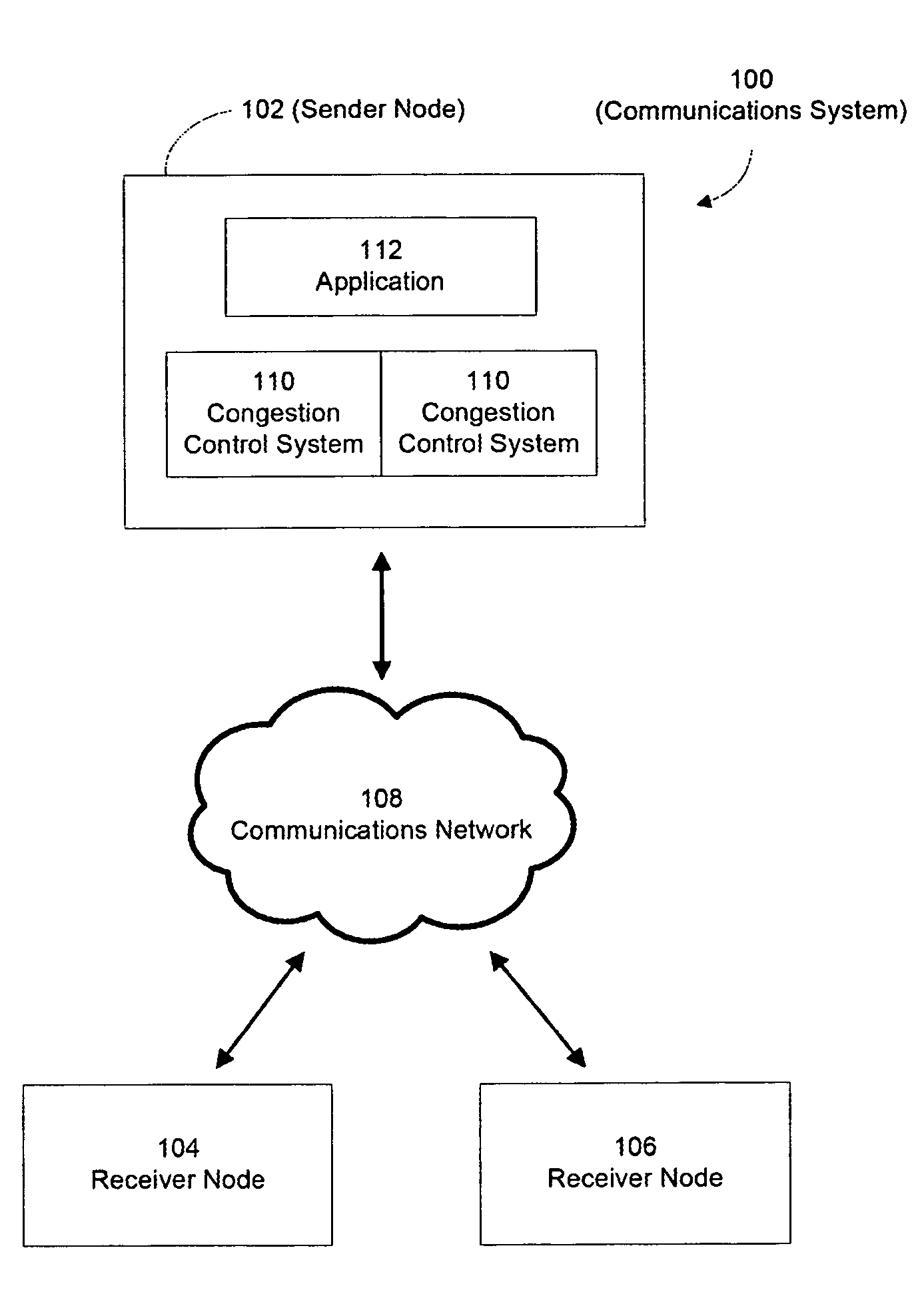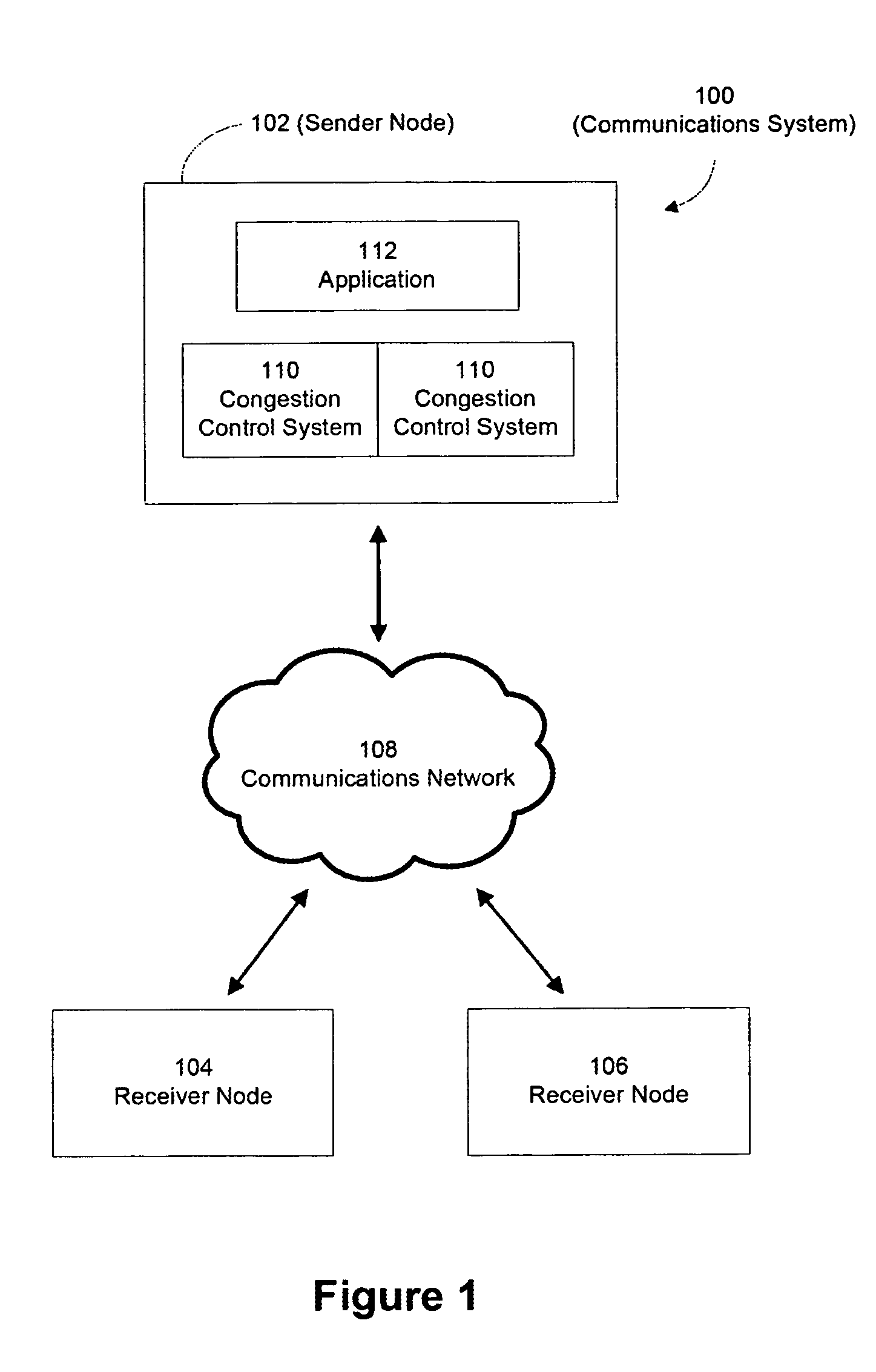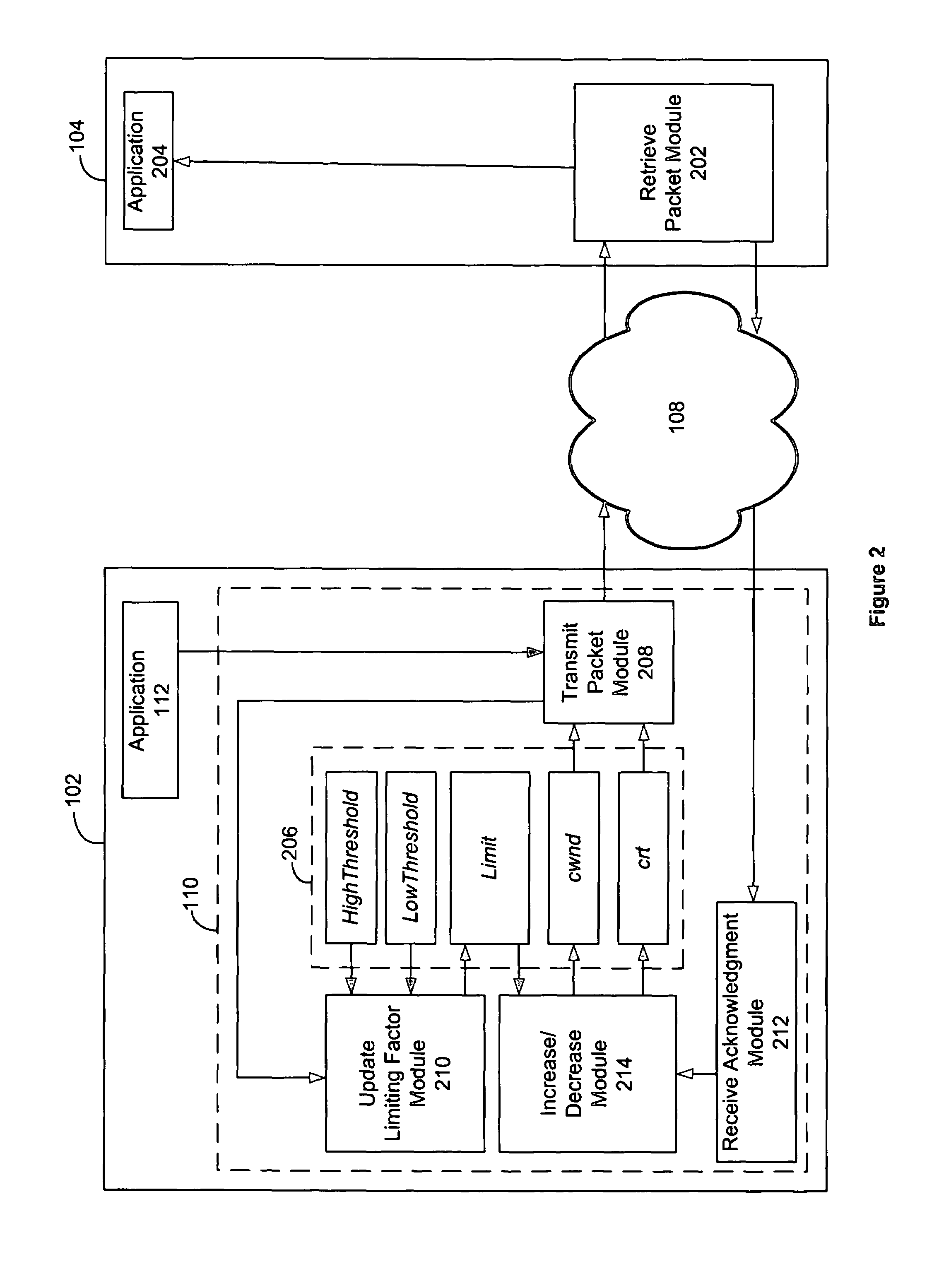Congestion control system
a control system and control system technology, applied in the field of computer networks, can solve problems such as inability to achieve a pure window control mechanism, network congestion, and excess network capacity, and achieve the effect of reducing the number of windows
- Summary
- Abstract
- Description
- Claims
- Application Information
AI Technical Summary
Benefits of technology
Problems solved by technology
Method used
Image
Examples
process 700
[0060]Process 700 of FIG. 7 responds to a decrease event, which causes the flow rate limit and window limit to be decreased. Process 600 of FIG. 6 responds to an increase event and causes either the flow rate limit, the window limit or both to be increased, depending on which factor is currently limiting the actual flow rate. In general, the Adjust versions of the functions (as shown in pseudocode on page 31) which increase only one limit (i.e., the rate or window limit) do not need to have the same behaviour as their respective Increase versions which are used when both limits are increased simultaneously. The amount by which the rate or window limit is increased is a function not only of their current values, but also a function of the number of bytes acknowledged by the ACK packet. This allows increase functions to have similar behaviour for flows operating at the same rate, even if they use packets with different sizes.
[0061]Process 500 begins at step 504 by listening on a commu...
PUM
 Login to View More
Login to View More Abstract
Description
Claims
Application Information
 Login to View More
Login to View More - R&D
- Intellectual Property
- Life Sciences
- Materials
- Tech Scout
- Unparalleled Data Quality
- Higher Quality Content
- 60% Fewer Hallucinations
Browse by: Latest US Patents, China's latest patents, Technical Efficacy Thesaurus, Application Domain, Technology Topic, Popular Technical Reports.
© 2025 PatSnap. All rights reserved.Legal|Privacy policy|Modern Slavery Act Transparency Statement|Sitemap|About US| Contact US: help@patsnap.com



